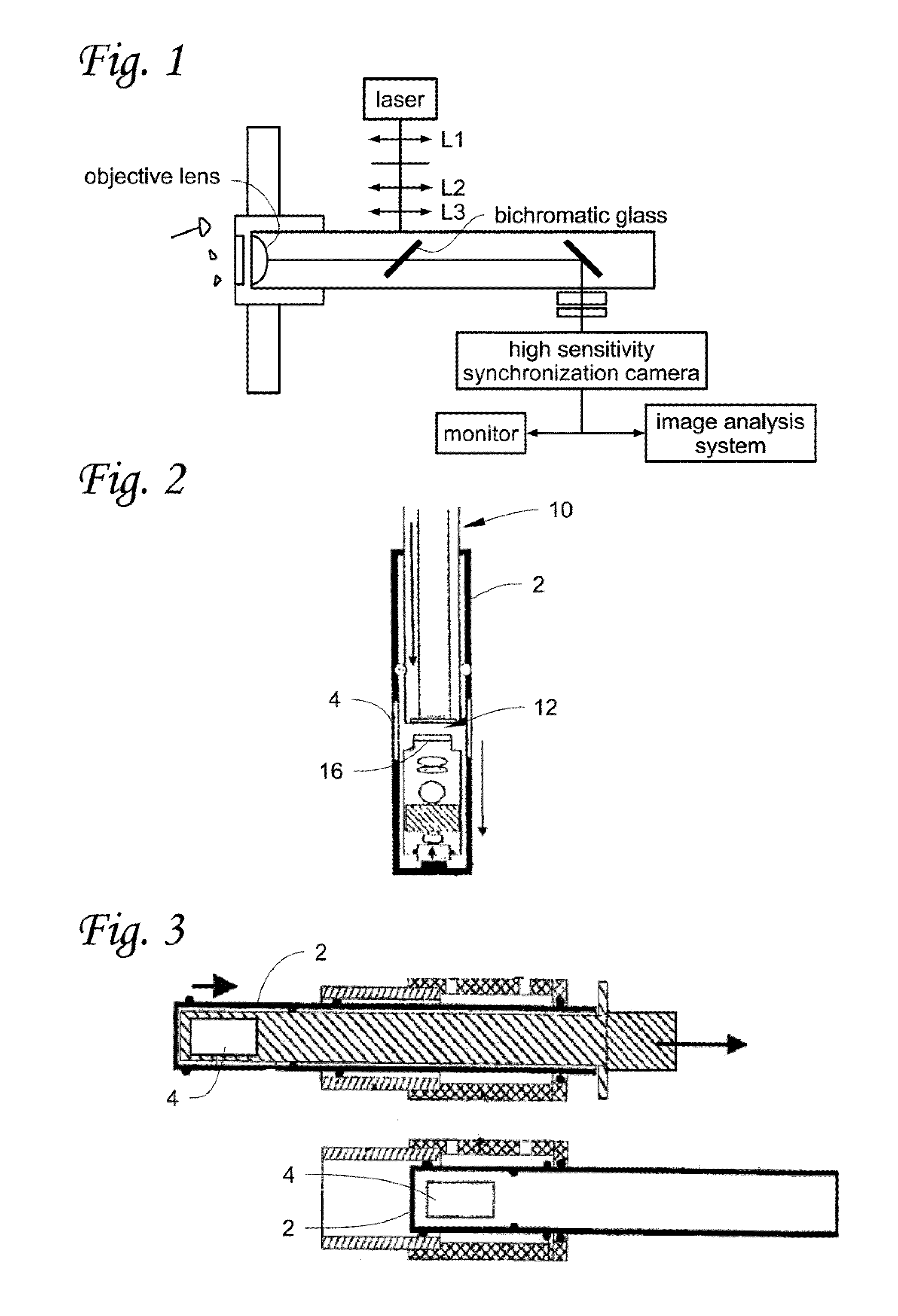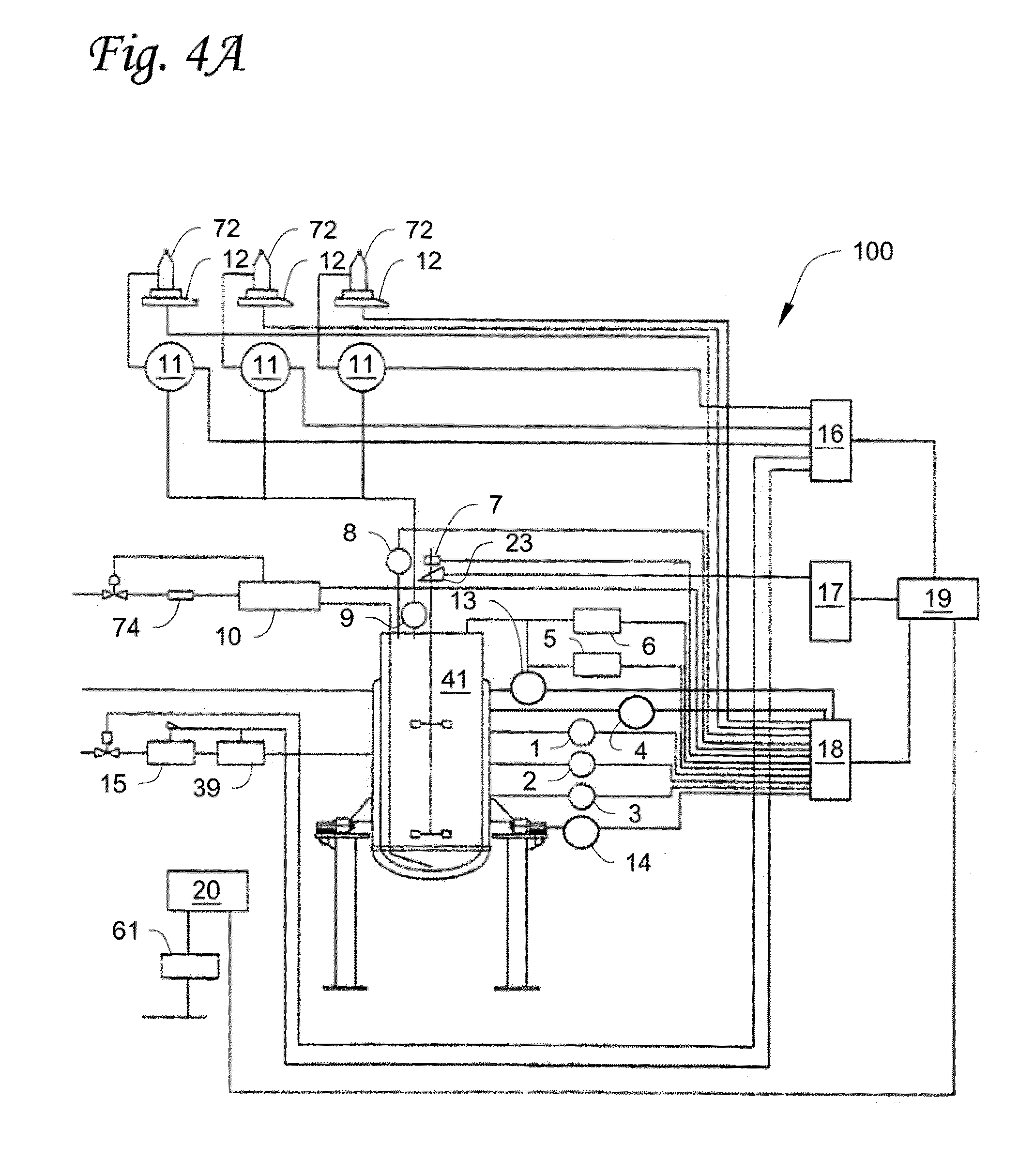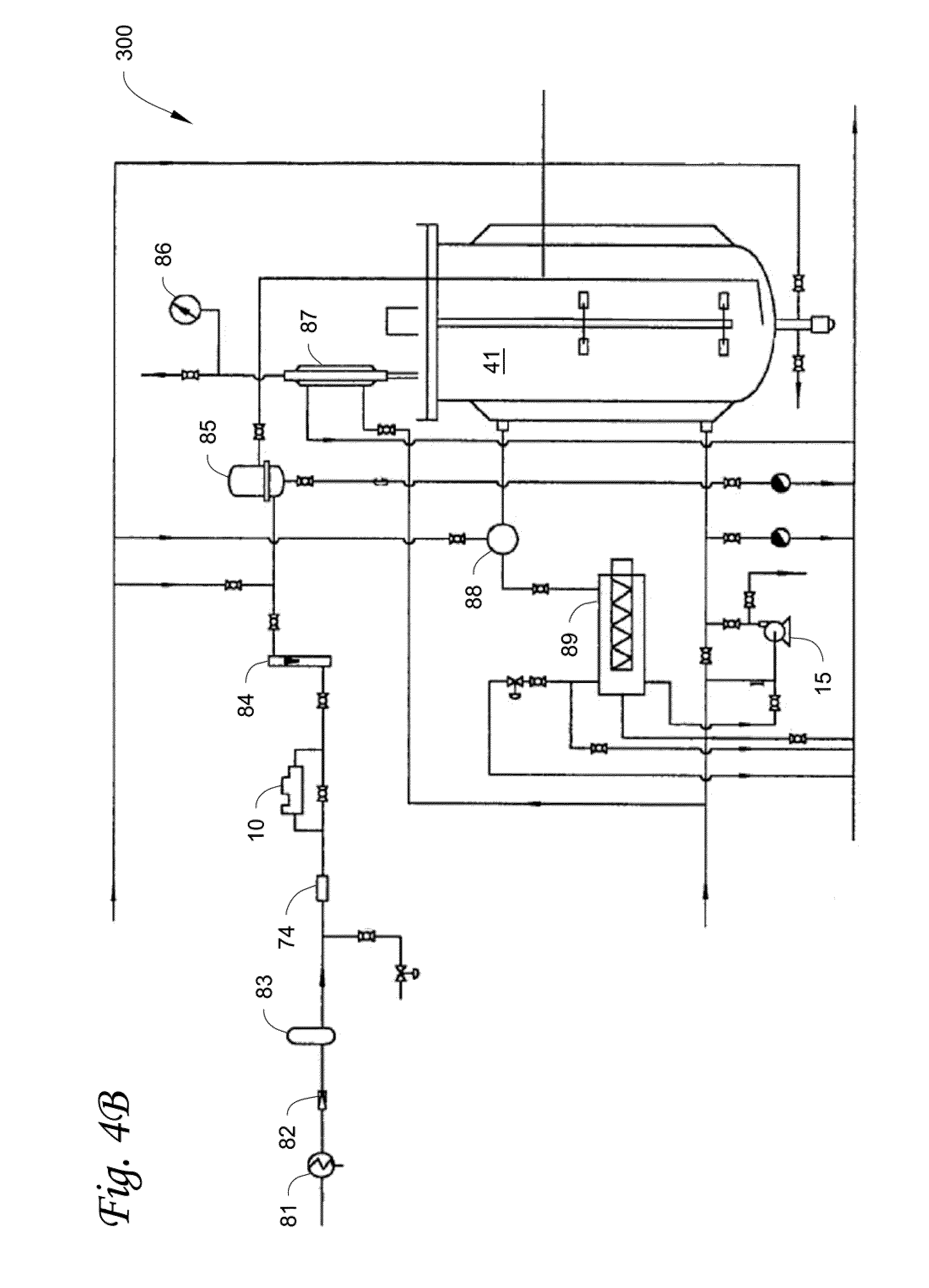Biochemical reactor
a biochemical reactor and reactor technology, applied in the field of biochemical reactors, can solve the problems of poor dynamic observation, difficult process analysis, no dynamic observation, etc., and achieve the effects of improving the contrast and resolution of the image, simple structure, and easy observation
- Summary
- Abstract
- Description
- Claims
- Application Information
AI Technical Summary
Benefits of technology
Problems solved by technology
Method used
Image
Examples
example 1
[0099]The invention provides a biochemical reactor with an in-situ microscope, wherein the in-situ microscope 4 is arranged in the biochemical reactor 41.
[0100]As shown in FIGS. 5 and 6, the main body 43 of the in-situ cell examination microscope is connected to the biochemical reactor 41 via a locknut 42, and the interface between the main body 43 of the in-situ cell examination microscope and the biochemical reactor 41 is sealed via a gasket 45.
[0101]The biochemical reactor 41 includes but is not limited to a microbe reactor, an animal cell reactor and a photo-biological reactor.
[0102]There is no specific limitation to the position where the in-situ cell examination microscope 4 is installed in the biochemical reactor as long as the subject to be observed in biochemical reactor can be observed. For example, it can be installed in a conventional manner at a desired position in the biochemical reactor, more specifically, for example, at a position on the reactor wall at 36%-70% heig...
example 2
[0123]2.1 Observation of the Fermentation Process of Recombinant Yeast
[0124]To verify the invention, an in-situ cell examination microscope for a biochemical reactor as described in Example 1 was used in a biochemical reactor to observe the fermentation process of recombinant yeast (available from INVITRO Co.).
[0125]During the culture, the fermentation broth was sampled every 2 hours, cell optical density (OD600) and cell dry weight were measured, and the number of cells was counted using an off-line hematocyte counter every 2 hours. Meanwhile, the in-situ cell examination microscope was used to make automatic observation and counting. The results were shown in Table 1.
[0126]As indicated by Table 1, the numbers of cells obtained using the in-situ cell examination microscope were essentially consistent with those obtained using the off-line hematocyte counter, although the results at the later stage during the culture showed some difference. When cell concentrations were fitted with ...
example 3
[0130]1. Materials and Methods
[0131]1.1 Experimental Strains
[0132]Cephalosporium Acremonium AC0508 (available from Shanxi Weiqida Pharmaceuticals Co.)
[0133]1.2 Culture Media
[0134]1.2.1 Shake-Flask Culture
[0135]Slope culture medium (100 mL): 1.2 g wort, 1.2 g peptone, 2.2 g agar, pH 7.0 (before sterilization)
[0136]Seed culture medium (100 mL): 3.0 g corn steep liquor, 0.4 g ammonium acetate, 2 g sucrose, 0.02 g DL-methionine, 0.05 g CaCO3, pH 6.5 (before sterilization)
[0137]Fermentation culture medium (100 mL): 7 g corn steep liquor, 4 g starch, 0.03 g amylase, 1 g soybean oil, 0.2 g DL-methionine, 0.4 g KH2PO4, 0.8 g (NH4)2SO4, 0.005 g FeSO4.7H2O, 1 g CaCO3, pH 6.2 (before sterilization)
[0138]1.2.2 Fermenter Culture
[0139]Primary seed culture medium (100 L): 1 kg glucose, 2.5 kg sucrose, 1 kg corn steep liquor, 3 kg soybean cake powder, 0.5 g CaCO3, 0.08 kg defoamer, pH 6.0 (before sterilization)
[0140]Secondary seed culture medium (100 L): 1 kg glucose, 5 kg sucrose, 3 kg corn steep ...
PUM
| Property | Measurement | Unit |
|---|---|---|
| volume distribution | aaaaa | aaaaa |
| pH | aaaaa | aaaaa |
| eccentric distance | aaaaa | aaaaa |
Abstract
Description
Claims
Application Information
 Login to View More
Login to View More - R&D
- Intellectual Property
- Life Sciences
- Materials
- Tech Scout
- Unparalleled Data Quality
- Higher Quality Content
- 60% Fewer Hallucinations
Browse by: Latest US Patents, China's latest patents, Technical Efficacy Thesaurus, Application Domain, Technology Topic, Popular Technical Reports.
© 2025 PatSnap. All rights reserved.Legal|Privacy policy|Modern Slavery Act Transparency Statement|Sitemap|About US| Contact US: help@patsnap.com



